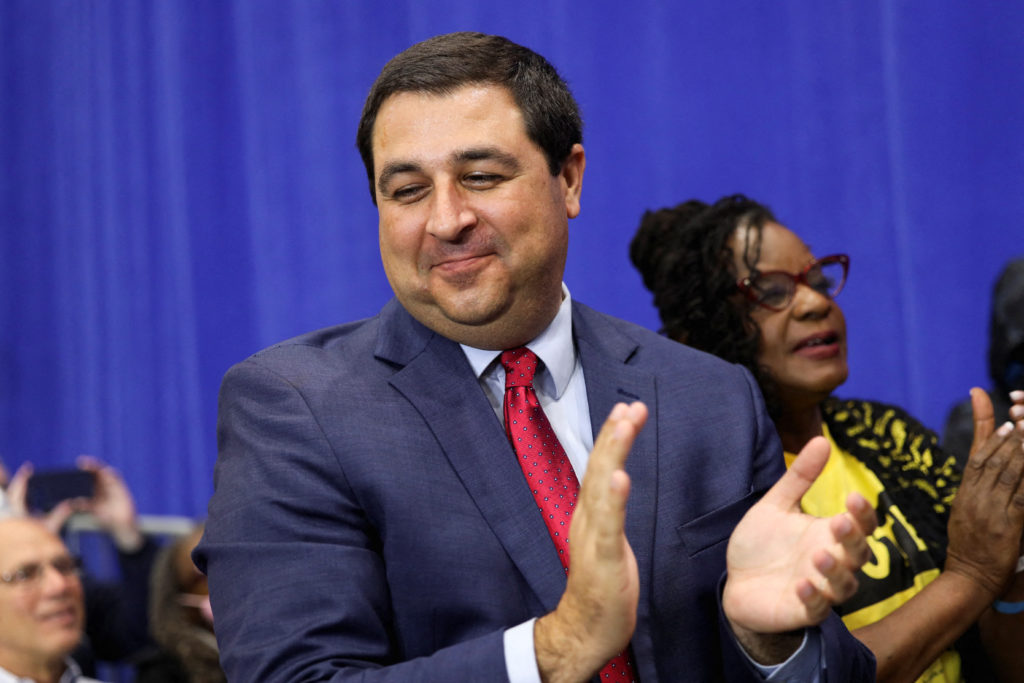
Attorney General Josh Kaul attends a rally with Wisconsin Governor Tony Evers before the mid-term elections in Milwaukee, Wisconsin, U.S. October 29, 2022. REUTERS/Daniel Steinle
The Wisconsin Supreme Court, led by its liberal majority, has struck down the state’s 176-year-old abortion ban, ruling 4-3 that the outdated law has been effectively superseded by more recent legislation. This decision, announced on Wednesday, underscores the evolving legal landscape surrounding abortion rights in the United States, particularly following the U.S. Supreme Court’s 2022 decision to overturn Roe v. Wade.
The ruling was anticipated due to the court’s liberal composition. Notably, one justice had explicitly campaigned on a platform supporting abortion rights, and the justices had previously criticized the ban during oral arguments in November. The original statute, enacted in 1849, was widely interpreted as a near-total abortion ban, criminalizing the procedure except when performed by a doctor in a medical emergency.
Historical Context and Legal Developments
The 1849 law was effectively nullified in 1973 by the landmark Roe v. Wade decision, which legalized abortion nationwide. However, the statute was never formally repealed, leaving conservatives to argue that its provisions were reactivated following the 2022 reversal of Roe. In response, Wisconsin Attorney General Josh Kaul filed a lawsuit asserting that subsequent abortion regulations, enacted during the Roe era, took precedence over the old ban.
Among these newer laws is a 1985 statute permitting abortions until a fetus is viable outside the womb, generally around 21 weeks of gestation. Additional regulations require women to undergo an ultrasound, wait 24 hours before the procedure, and provide written consent, while doctors must administer abortion-inducing drugs in person.
Judicial Opinions and Reactions
The majority opinion, authored by Justice Rebeca Dallet, concluded that the comprehensive nature of the newer legislation impliedly repealed the 1849 ban. Dallet emphasized that the modern laws thoroughly address all aspects of abortion, rendering the old statute obsolete.
In contrast, Sheboygan County District Attorney Joel Urmanski, a Republican, defended the 1849 law, arguing that it could coexist with current restrictions, much like varying penalties for the same offense. However, Dane County Circuit Judge Diane Schlipper previously ruled that the old ban only applied to non-consensual feticide, not consensual abortions, providing some legal clarity until the Supreme Court’s decision.
“A solid majority of Wisconsin voters in the 2024 election, 62%, said abortion should be legal in all or most cases, according to AP VoteCast.”
Justice Annette Ziegler, in her dissent, criticized the ruling as an overreach of judicial power, accusing the liberal justices of aligning with their personal beliefs and political affiliations. Ziegler specifically targeted Justice Janet Protasiewicz, alleging she had pre-committed to the decision during her campaign.
Implications and Future Outlook
With the Supreme Court’s decision, abortion providers and patients in Wisconsin now have greater assurance that the procedure will remain legal in the state. This ruling is seen as a significant victory for abortion rights advocates, who have faced increasing restrictions nationwide.
Heather Weininger, Executive Director of Wisconsin Right to Life, expressed disappointment, arguing that the ruling effectively legislates from the bench by implying a repeal of the 1849 ban. Meanwhile, Planned Parenthood of Wisconsin had sought a Supreme Court decision on the ban’s constitutionality earlier this year, but the court dismissed the case without explanation.
The political implications of this decision are profound, particularly as the state prepares for upcoming elections. Democratic-backed candidates have gained traction in Wisconsin, as evidenced by Susan Crawford’s recent victory over conservative Brad Schimel for an open Supreme Court seat, ensuring a liberal majority until at least 2028.
As the legal and political battles over abortion rights continue, Wisconsin’s Supreme Court decision marks a pivotal moment in the ongoing national debate, highlighting the complex interplay between historical statutes and modern legislative frameworks.







